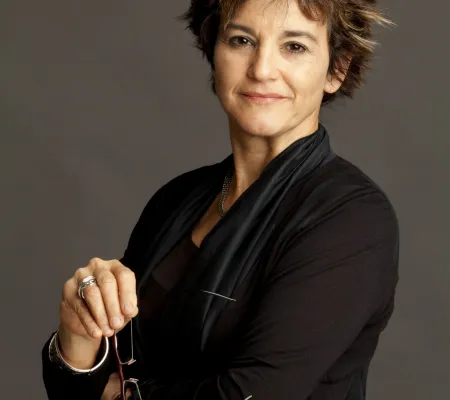Dr. Ramírez will discuss the exhibitions she organized while she was the curator of Latin American Art at UT Austin from 1989–2000 while we examine archival photographs and documents related to those exhibitions held by the Blanton Museum of Art.
The focus will be on four major exhibitions Ramírez organized on South American art: The School of the South: El Taller Torres-García and Its Legacy (1991), Encounters/Displacements: Luis Camnitzer, Alfredo Jaar, Cildo Meireles (1992), Re-Aligning Visions: Alternative Currents in South American Drawing (1998), and Cantos Paralelos: Visual Parody in Contemporary Argentinean Art (1999).
Bio: Mari Carmen Ramírez is the Wortham Curator of Latin American Art and founding Director of the International Center for the Arts of the Americas (ICAA) at the Museum of Fine Arts, Houston. A globally renowned authority on modern and contemporary Latin American art, Ramírez has published extensively and curated numerous exhibitions, including the award-winning Inverted Utopias: Avant-Garde Art in Latin America (2004, with Héctor Olea); Beatriz González: A Retrospective (with Tobias Ostrander, 2019); Hélio Oiticica: The Body of Color (2006); Contingent Beauty: Contemporary Art from Latin America (2015); HOME, So Different, So Appealing (with Chon Noriega and Pilar Tompkins, 2017); Joaquín Torres-García: Constructing Abstraction with Wood (Menil Foundation, 2009). She’s also conceptualized and implemented the ICAA Documents of 20th Century Latin American and Latino Art Project, a major digital archive and book series focused on primary sources. In 2005 Ramírez received the Award for Curatorial Excellence granted by the Center for Curatorial Studies at Bard College. That same year, TIME magazine named her one of “The 25 Most Influential Hispanics in America.” In 2023, Ramírez was awarded the Queen Sofía Spanish Institute’s Sophia Award for Excellence by her Majesty, Queen Sofía of Spain.
Co-organized by the Department of Art and Art History’s Art History Lecture Series and the Center for Latin American Visual Studies (CLAVIS).
With collaboration from Blanton Museum of Art. Funding support provided by the Art History Division Lecture Series, Office of the Dean of the College of Fine Arts, and Teresa Lozano Long Institute of Latin American Studies and Argentine Studies Program.

Event Details
Blanton Museum of Art, Capitol Room (map)
Free and Open to the Public


